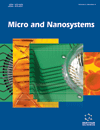
Full text loading...

Alzheimer’s disease (AD) is characterized by progressive neurodegeneration and oxidative stress. Quercetin, a natural flavonoid, shows neuroprotective potential but has limited bioavailability. This study aims to develop a quercetin-loaded nanoliposome (QUE-NL-1) to enhance brain delivery and therapeutic efficacy in AD.
QUE-NL-1 was prepared via the thin-film hydration method and characterized by DLS, TEM, and zeta potential analysis. Acute oral toxicity was evaluated in rats. Alzheimer’s disease was induced in rodents using streptozotocin (STZ) and aluminum chloride (AlCl3). Behavioral tests (actophotometer, elevated plus maze), biochemical assays (SOD, CAT, MDA, GSH), and histopathology were conducted.
QUE-NL-1 had a mean droplet size <200 nm, PDI ~0.3, and zeta potential of -26.6 mV. No toxicity was observed at 2000 mg/kg. In both STZ and AlCl3 models, QUE-NL-1 improved cognitive behavior, increased SOD, CAT, and GSH levels, reduced LPO, and preserved neuronal integrity.
The nano formulation of quercetin improved its stability, safety, and brain-targeting ability, leading to significant cognitive and antioxidative benefits in AD models. Histological analysis further confirmed neuroprotection.
QUE-NL-1 is a safe and effective nanocarrier formulation with promising potential for Alzheimer’s disease management. Further studies are warranted to assess pharmacokinetics and clinical applicability.

Article metrics loading...

Full text loading...
References


Data & Media loading...